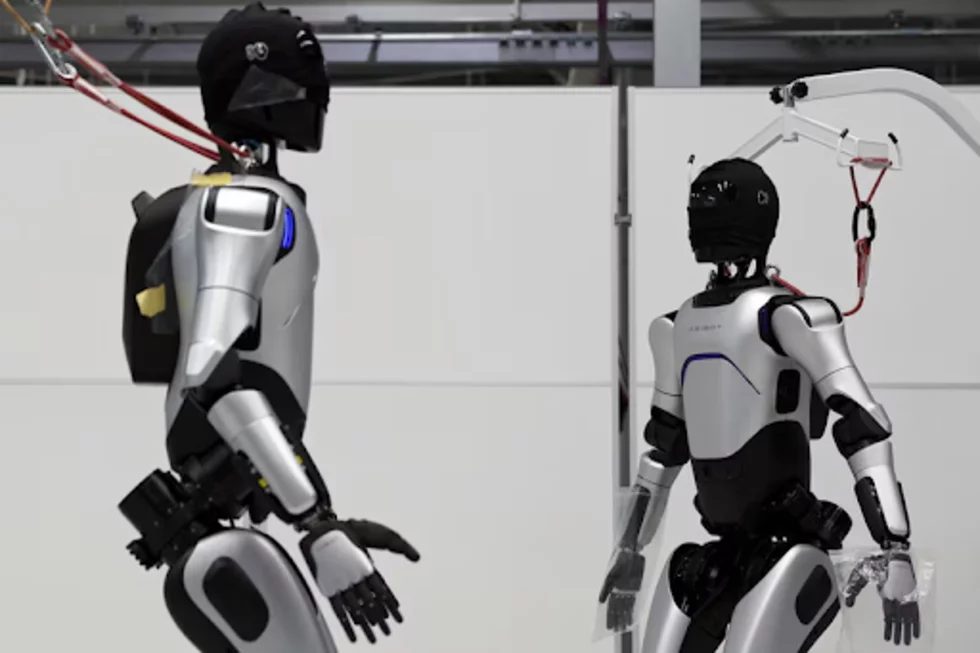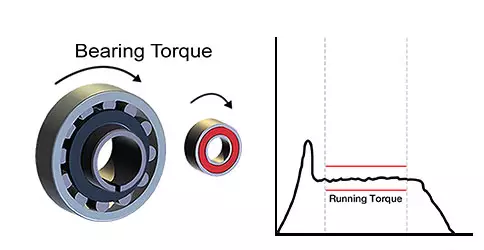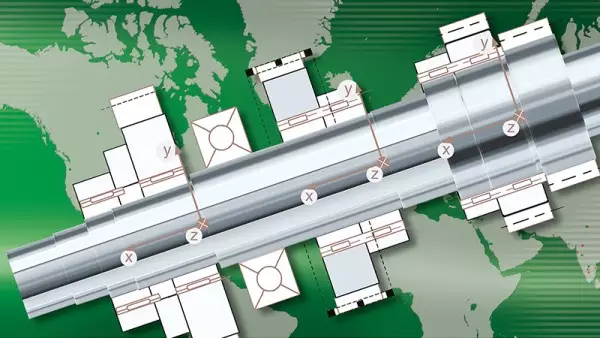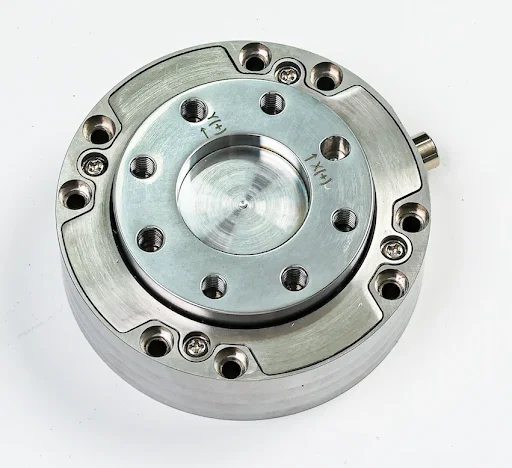
6-Axis Force/Torque Sensors for Multi-Dimensional Loads and Torque
In modern robotics, six-axis force/torque sensors have become essential for precise and stable operation. These sensors measure forces and torques along three orthogonal linear axes (X, Y, Z) and three rotational axes (roll, pitch, yaw), effectively giving a robot the ability to “feel” loads in all directions. By providing real-time multi-dimensional force data, a 6-axis sensor allows a robot to respond intelligently to contact forces, enabling advanced force feedback control, safe interaction, and adaptive manipulation.
Because robotic applications demand accuracy and robustness, the design of these sensors emphasizes several key attributes. High structural stiffness is critical so that the sensor does not significantly deform under load – this ensures fast response and maintains precise positioning. Low cross-talk between axes is also important: the sensor should measure each force/torque component independently with minimal interference from loads on other axes. High-quality multi-axis sensors achieve low cross-talk through careful mechanical decoupling and calibration compensation. Other essential features include high overload safety margins (to survive unexpected force spikes), temperature compensation (to maintain accuracy across a range of temperatures), and a compact form factor for easy integration at a robot’s wrist or base.
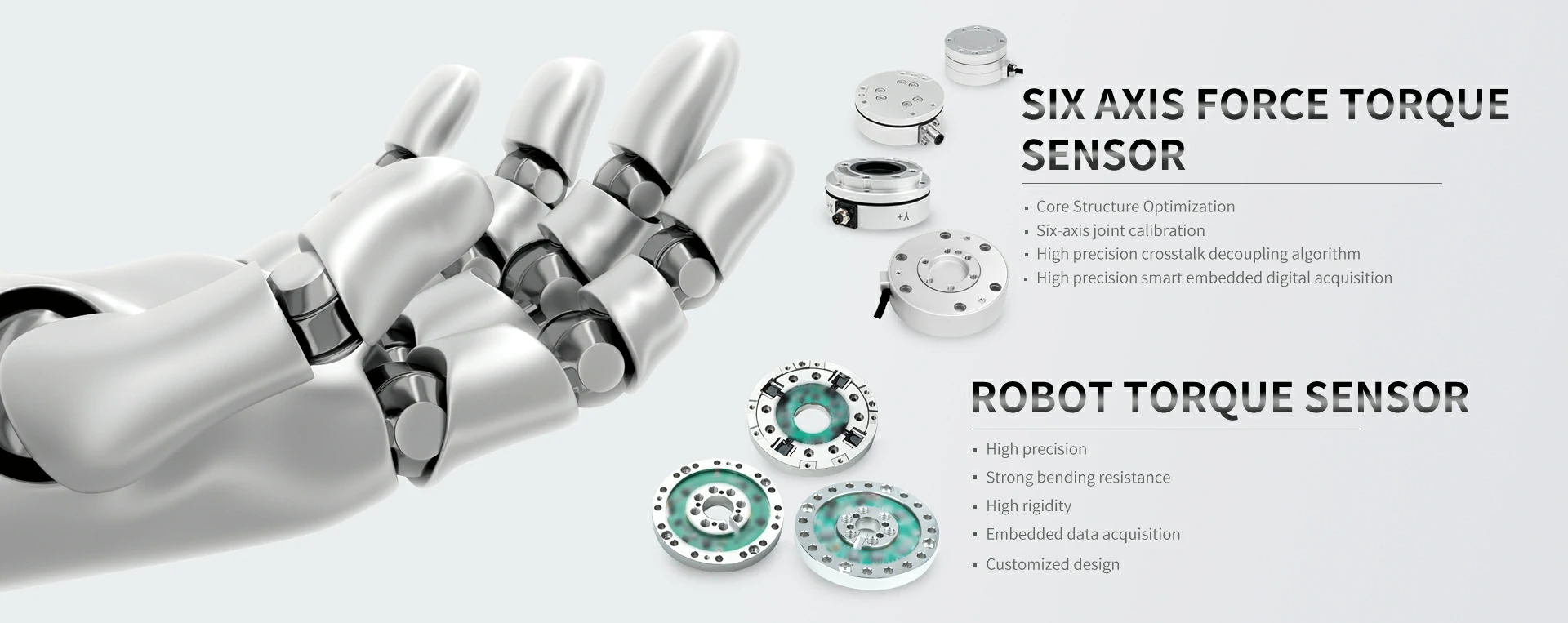
Pacific International Bearing Sales (PIB) offers a range of advanced 6-axis force/torque sensors that meet these demanding requirements. In this article, we discuss the FTR series sensors – a family of high-performance 6-axis transducers covering various load capacities – as well as two additional models, the MT508 6-Axis Force Platform and MT521G2 6-Axis Force Sensor. We will examine their technical specifications and design features such as high stiffness, cross-talk cancellation, compactness, high overload safety, and temperature compensation. We also highlight how these sensors support robotics applications like force feedback control, interaction compliance, and tool force monitoring.
FTR Series 6-Axis Force/Torque Sensors
The FTR series is a family of six-axis force/torque sensors designed for multi-dimensional force measurement in robotics and automation. Each model in this series is defined by its load capacity (force in Newtons and torque in Newton-meters). For example, the FTR sensors span capacities from 150 N & 10 Nm (smallest model) up to 1000 N & 200 Nm (largest model), covering a wide range of application needs. All FTR sensors measure three orthogonal force components (Fx, Fy, Fz) and three torque components (Tx, Ty, Tz) simultaneously.
Despite their different load ratings, the FTR sensors share common design features aimed at high performance:
- Integrated Compensation Electronics: The FTR series incorporates real-time calibration and compensation for cross-talk, temperature drift, hysteresis, and nonlinearity. This means the sensor outputs are internally corrected so that a force on one axis produces negligible signal on the others, and measurements remain stable as temperature changes. This advanced built-in signal conditioning yields excellent accuracy (on the order of 0.1% full-scale) and simplifies integration, since the sensor can output high-fidelity data directly to the robot controller.
- High Stiffness and Overload Protection: The FTR sensors are built with a stiff structural design and robust materials, ensuring minimal deflection under maximum load. High rigidity not only improves measurement precision but also gives the sensor a high natural frequency, which is important for responsive force control. Each model is engineered to withstand substantial overload – typically at least 300% of rated capacity without damage. This high safety margin protects the sensor during accidental impacts or force transients often encountered in robotics. The sensors are described as “extremely rugged and durable,” reflecting their ability to endure harsh operational conditions.
- Compact and Lightweight Construction: The FTR series achieves its performance in a compact package. Even the highest capacity FTR sensor (rated 1000 N/200 Nm) is about 130 mm in diameter and 41.6 mm in height, weighing under 0.9 kg, while the smallest 150 N/10 Nm unit is only 75 mm × 28.6 mm and ~265 g. The slim, disk-like form factor allows easy mounting at a robot wrist or tool flange without significantly altering the robot’s payload or kinematics. Multiple communication interface options are available (including CAN, EtherCAT, RS485, and SPI), making it straightforward to interface the FTR sensors with modern robot controllers and data acquisition systems.
Table 1 below summarizes key specifications for the FTR series 6-axis sensors, highlighting the range of capacities and resolutions available:
| Model (FTR Series) | Force Capacity (Fx, Fy / Fz) | Torque Capacity (Tx, Ty, Tz) | Force Resolution | Torque Resolution | Dimensions (Ø×H) | Weight |
| 150 N–10 Nm | Fx, Fy: 150 NFz: 300 N | 10 Nm | ~0.017 N (Fx, Fy)~0.033 N (Fz) | ~0.0011 Nm | 75 mm × 28.6 mm | 265 g |
| 300 N–30 Nm | Fx, Fy: 300 NFz: 600 N | 30 Nm | ~0.033 N (Fx, Fy)~0.017 N (Fz) | ~0.0033 Nm | 75 mm × 36 mm | 390 g |
| 1000 N–50 Nm | Fx, Fy: 1000 NFz: 2000 N | 50 Nm | 0.1 N (Fx, Fy)0.2 N (Fz) | 0.01 Nm | 90 mm × 36 mm | 840 g |
| 1000 N–100 Nm | Fx, Fy: 1000 NFz: 2000 N | 100 Nm | 0.2 N (Fx, Fy)0.4 N (Fz) | 0.02 Nm | 130 mm × 35.5 mm | 945 g |
| 1000 N–200 Nm | Fx, Fy: 1000 NFz: 2000 N | 200 Nm | 0.2 N (Fx, Fy)0.4 N (Fz) | 0.04 Nm | 130 mm × 41.6 mm | 890 g |
Table 1 – Specifications of FTR series 6-axis force/torque sensors (capacities and typical resolutions). All FTR models have a safe overload limit of approximately 300% of rated load and are calibrated for an operating temperature range of roughly –10 °C to +60 °C. The sensors output digital data via multiple interface protocols, and incorporate internal temperature and cross-talk compensation for high accuracy across all six channels.
The FTR series sensors are well suited for robotics applications ranging from small-scale precision assembly (using the 150 N/10 Nm unit) up to large industrial robot tasks (using the 1000 N/200 Nm models). Their combination of high resolution (able to resolve forces on the order of 0.1 N or less) and robust load capacity makes them versatile for force feedback and control. Furthermore, the built-in networking interfaces (e.g. EtherCAT and CAN bus) allow these sensors to be integrated in real-time control loops, enabling a robot to continuously sense and react to forces with minimal latency.
MT508 6-Axis Force Platform
The MT508 6-Axis Force Platform is a high-capacity multi-axis load sensor designed for applications that involve large forces and moments. Unlike the compact FTR sensors, the MT508 is a force platform – essentially a robust 6-axis load cell capable of measuring heavy loads along all axes. This makes it ideal for scenarios such as load testing rigs, robotic milling/assembly stations with significant forces, or even biomechanical force platforms where multi-axis ground reaction forces are measured.
The MT508 platform is engineered with an integrated mechanical decoupling design. This means the sensor’s structure is built to mechanically isolate the different force components, minimizing cross-talk. Even under very high loads, the platform provides separate readings for Fx, Fy, Fz, and the three moments with limited interference. The device is specified for both static and dynamic load measurements, indicating it can capture rapidly changing forces in applications like impact tests or walking robotics, as well as steady loads.
Key specifications for the MT508 sensor platform are summarized in Table 2:
| Specification | MT508 6-Axis Force Platform |
| Rated Force Capacity (Fx) | ~10 kN (≈1000 kg_f) * (X-axis) |
| Rated Force Capacity (Fy) | 5 kN (Y-axis) |
| Rated Force Capacity (Fz) | 23 kN (Z-axis) |
| Rated Torque Capacity (Mx) | 2.5 kN·m (about 2500 N·m around X-axis) |
| Rated Torque Capacity (My) | 5 kN·m around Y-axis |
| Rated Torque Capacity (Mz) | 23 kN·m around Z-axis |
| Nonlinearity (max) | 1% of full scale |
| Hysteresis (max) | 1% of full scale |
| Repeatability | 0.5% of full scale |
| Creep (30 minutes) | 0.3% of full scale |
| Safe Overload Limit | 120% of full scale |
| Ultimate Overload Limit | 150% of full scale (structural failure point) |
| Temperature Compensation | –10 °C to +40 °C range |
| Operating Temperature | –20 °C to +60 °C range |
| Protection Rating | IP65 (sealed against dust and splashing water) |
| Signal Output | Analog strain-gauge bridges (≈1.0 mV/V nominal output) |
Table 2 – Key technical specifications of the MT508 6-axis force platform sensor. (*Nominal Fx capacity is listed as “10 kg” in some documentation, but this appears to be a typographical error; the correct Fx capacity is approximately 10 kN to be consistent with the large Fy and Fz capacities.)
As shown, the MT508 can endure extremely high loads (for instance, up to ~23,000 N vertically). Its construction likely involves multiple load cell elements or a stiff flexure structure at each corner of the platform to support those loads. The asymmetry in X vs. Y capacity (10 kN vs 5 kN) suggests a directional design, possibly reflecting how the platform is supported or mounted. The torque capacities are equally substantial, up to 23 kN·m about the vertical axis. This allows the MT508 to measure large moment loads such as those generated by heavy robotic arms or machinery.
In terms of precision, while the MT508’s 1% FS nonlinearity and hysteresis are not as ultra-precise as smaller sensors, they are reasonable for such a high load device. The sensor includes temperature compensation and exhibits only 0.1%FS/10°C sensitivity drift, which is important given that large metal structures can be sensitive to temperature changes. The IP65 rating means the platform is protected from dust and can handle splashed water or oil, useful for industrial environments.
Overall, the MT508 platform serves applications where ordinary 6-axis sensors would overload. It provides multi-axis force/torque sensing for heavy-duty tasks like industrial assembly presses, robotic machining (e.g. drilling or grinding with force feedback), or testing of components under load. Its design ensures that even under these large forces, the data from each axis remains reliable due to the mechanical decoupling that reduces cross-talk between axes.
MT521G2 6-Axis Force Sensor
The MT521G2 is a 6-axis force/torque sensor targeted at robotics and precision applications, where high accuracy and moderate load capacity are required. Unlike the MT508, the MT521G2 is a more compact sensor intended to be mounted on robot arms or tooling. Its typical use-cases include robotic force control in assembly, CNC machining centers, delicate surface finishing, and even high-precision medical robotics.
A defining feature of the MT521G2 is its high precision. The sensor is specified with very low nonlinearity, hysteresis, and repeatability error – on the order of 0.03% of full-scale for each. Such performance is comparable to high-grade laboratory load cells and ensures that even very small force/torque changes are captured accurately. The sensor also has a strong resistance to off-axis or bias loads. In practice, this means if a force is applied slightly off the sensor’s center or if multiple components are loaded, the MT521G2 maintains accuracy without being significantly affected by bending moments. This is crucial for robot wrist sensors that may experience complex loadings.
The MT521G2’s construction likely uses a strain gage arrangement in a compact flexure. It is built to handle the rigors of industrial use: it has a safe overload limit of 150% and an ultimate overload of 300% of its rated capacity, providing a good safety margin. The device is environmentally sealed to about IP66, meaning it is dust-tight and can withstand powerful water jets – a high level of protection suitable for factory conditions. It also features temperature compensation similar to the MT508, keeping zero drift and sensitivity changes to within ~0.05%/10°C. The sensor’s output is analog (strain-gauge bridge) with a typical full-scale output around 1.0 mV/V and requires standard excitation (5–12 VDC), so it can interface with common amplifier electronics or indicator modules.
Table 3 summarizes the key specifications of the MT521G2 sensor:
| Specification | MT521G2 6-Axis Sensor |
| Rated Load Capacity | (Application-specific, e.g. hundreds of N scale forces, tens of Nm torques – configurable per customer requirements) |
| Nonlinearity | ±0.03% of F.S. max |
| Hysteresis | ±0.03% of F.S. max |
| Repeatability | ±0.03% of F.S. max |
| Cross-Talk (Interference) | ≤1% of F.S. (typical) |
| Creep (30 min) | ±0.05% of F.S. |
| Zero Balance (Offset) | ±2% of F.S. |
| Safe Overload Limit | 150% of rated capacity |
| Ultimate Overload | 300% of rated capacity |
| Temperature Compensation | –10 °C to +40 °C range (calibrated) |
| Operating Temperature | –20 °C to +75 °C |
| Protection Rating | IP66 (dust-tight, water resistant) |
| Output Signal | Analog strain gauge bridge (approx. 1.0 mV/V) |
Table 3 – Technical specifications of the MT521G2 six-axis force/torque sensor. (The exact force/torque capacity of the MT521G2 can be selected to suit the target application. It is designed for use on robot arms and tooling, implying capacity in the order of hundreds of Newtons and a few tens of Nm, with the above performance specifications maintained over that range.)
With its high precision and compact form, the MT521G2 is particularly suited for tasks that demand sensitivity. For example, in a fine assembly operation or a surgical robot, detecting a few Newtons of force difference can be critical – this sensor’s low noise and error ensure that such differences are measurable. At the same time, the sensor’s ruggedness (IP66 and overload tolerance) means it can survive in industrial settings where occasional shocks or harsh conditions occur. The strong bias load resistance mentioned for this model indicates it can accurately measure forces even when the load is not perfectly aligned, which is often the case in real robotic operations (e.g., a tool contacting a surface at an angle).
In summary, the MT521G2 fills the role of a high-accuracy 6-axis transducer for medium load applications, such as end-of-arm force sensing on robots that interact delicately with their environment. It complements the FTR series and MT508 by covering the mid-range: more capacity than the smallest FTR units, but far more precision than the heavy-duty MT508 platform.
Key Features and Engineering Considerations
All of the above 6-axis sensors – whether the FTR series or the MT models – are engineered to meet the demanding conditions of robotic force control. The following features are particularly noteworthy from an engineering perspective:
- High Stiffness, Low Compliance: A stiff sensor yields more accurate and stable measurements because it minimizes additional deflection under load. High stiffness is also important for control stability – a compliant sensor could introduce flexibility at the robot’s wrist, degrading precision. The sensors discussed have rigid structures (e.g. machined steel or aluminum alloy flexures) that provide high stiffness and excellent repeatability under load. This ensures that the robot’s end effector position is not significantly displaced when forces occur, and the force readings truly reflect external loads rather than sensor bending. High torsional and bending stiffness also push the sensor’s natural frequencies higher, which is beneficial for dynamic force control applications.
- Low Cross-Talk Design: Measuring six components simultaneously requires isolating each measurement channel. The FTR series uses both mechanical design and electronic compensation to achieve very low cross-talk between axes (auto-correcting any slight coupling in real time). The MT508 platform takes a more physical approach with integrated mechanical decoupling – its structure directs forces through specific paths to separate sensing elements. Meanwhile, the MT521G2’s construction inherently minimizes cross-talk and it’s specified to have cross-talk error on the order of 1% or less. Low cross-talk means, for example, that a pure Z-force will register almost no extraneous X/Y or torque readings, which simplifies the robot’s force control algorithms (no complex matrix calibration needed to disentangle the sensor signals).
- Overload Safety Factor: Robotics can be unpredictable – a tool collision or a dropped workpiece can suddenly impart a large impulse force. The sensors here are built with generous overload margins. FTR sensors safely handle ~3× overload; the MT508 can take 1.2× safely (and up to 1.5× momentarily) without permanent damage; the MT521G2 similarly endures 1.5× safely and 3× at ultimate limit. Internally, this may involve mechanical stops or simply a strong elastic range of the material before yielding. High overload tolerance translates to longer operational life and less risk of sensor failure in the field. Even if the robot programming and controller have force limits, these hardware safety factors are crucial backup protection.
- Temperature Compensation and Stability: All the discussed sensors have built-in temperature compensation, which corrects for the natural drift of strain gauges with temperature. For instance, the FTR series actively compensates temperature effects via its electronics, and the analog sensors MT508/MT521 are calibrated over a compensated range (typically around –10 to 40 °C) to hold zero and span drift to very low values (0.05–0.1% per 10 °C). This is important in industrial settings where ambient temperature can vary or the sensor heats up during operation. Good thermal stability means the force readings remain accurate throughout a shift without needing frequent re-zeroing.
- Compactness and Mounting: Especially for end-of-arm sensors (FTR and MT521G2), a slim and lightweight form is crucial. These sensors are designed to add minimal payload and keep the robot’s form factor tight. For example, the smallest FTR unit is only 28.6 mm thick, and even the larger ones are under 42 mm. Standard mounting flanges or bolt patterns are typically provided to attach easily between the robot wrist and tool. The compact design does not sacrifice performance – modern material and strain gauge technology allows even small sensors to maintain high accuracy and capacity.
- Digital Integration (for FTR series): A notable feature of the FTR sensors is their digital output capability. With options like EtherCAT, CAN bus, RS485, and SPI available, these sensors can plug directly into a robot’s control network. EtherCAT, for instance, is commonly used in real-time robotic systems; having the sensor data on the bus with microsecond timestamping enables tight feedback loops for force control. Digital outputs also reduce noise and calibration complexity (the sensor can output forces in engineering units after internal calibration). By contrast, analog sensors like the MT508/521 require an external amplifier and ADC. Both approaches have merit, but the inclusion of digital interfaces in sensors underscores a trend towards easier integration for end-users. It effectively turns the sensor into a smart device on the industrial network.
In summary, these features (stiffness, low cross-talk, overload resistance, thermal stability, compactness, and integration friendliness) are what make the difference between an ordinary load cell and a high-performance 6-axis sensor tailored for robotics. They ensure that when installed on a robot, the sensor will provide reliable and precise data without being the weak link in the system’s mechanical or control performance.
Applications in Robotics and Automation
High-quality 6-axis force/torque sensors unlock a variety of advanced capabilities in robotic systems. Below, we discuss several key applications and how multi-axis sensors contribute to each:
Force Feedback and Compliance Control: One of the primary uses of 6-axis sensors is to enable force feedback loops in robot control. With a sensor at the wrist, a robot can sense contact forces and adjust its motions in real time to achieve a desired force profile. For example, during an assembly task such as inserting a delicate component, the sensor detects when the part touches its mating surface and how much force is being applied. The controller can then modulate the robot’s motion – if force rises above a threshold (indicating a misalignment or obstruction), the robot can back off or try a different angle; if force is too low (part not fully seated), it can push a bit more. This prevents damage (too much force) and ensures proper seating (enough force) through an instant feedback loop. Similarly, in tasks like polishing, sanding, or grinding, maintaining a consistent contact force is crucial for uniform results. The sensor continuously measures the force and torque at the tool; the robot’s control system compares it to a target value and adjusts the pressure accordingly. This results in uniform surface finish, better quality, and longer tool life as the robot avoids excessive force that could cause wear or chatter. Force feedback via a 6-axis sensor essentially gives the robot a sense of touch, allowing compliance control – the robot can compliantly press against a surface with controlled force instead of rigidly following a position trajectory.
Interaction Control and Safety: When robots work in contact with unpredictable environments or alongside humans, sensing interaction forces becomes critical. A 6-axis sensor enables interaction control strategies that adjust to the forces encountered. For instance, a robot performing material handling or machine tending can use force sensing to detect when an item has been gripped or to confirm a part is properly seated by feeling the reaction force. In human-robot collaboration (HRC) settings, the sensor can detect even slight contacts or resistance from a human coworker. If a person pushes on the robot or inadvertently steps into its path, the control system can sense this and stop or re-route the motion instantly, preventing injuries. This is often known as collision detection or compliance mode in cobots (collaborative robots). Additionally, multi-axis sensors help with adaptive contact tasks – for example, when a robot is inserting a rubber seal (flexible object) into a groove, the required force may vary as the seal deforms. The sensor feedback allows the robot to adjust force in different directions to guide the part in, a process known as active compliance. Another safety aspect is collision protection for the robot itself: if the robot crashes into a fixture or wall, the abnormal spike in forces detected can trigger an emergency stop faster than pure motor-torque detection, minimizing damage. In summary, the sensor makes the robot aware of interaction forces, enabling it to behave safely and flexibly – yielding when appropriate, pushing when necessary, and detecting anomalies.
Tool Monitoring and Process Quality Control: Integrating a 6-axis sensor into a robotic tool or end-effector allows for real-time monitoring of forces during process operations. This is invaluable for quality control and predictive maintenance. For example, consider a robot using a nutrunner tool to tighten bolts: the sensor can measure the torque applied to each bolt and verify it reaches the specified value. This ensures each fastener is properly tightened and can log a trace of the torque vs. turn profile for quality assurance. If a bolt is cross-threaded or a hole is misaligned, the sensor would detect an abnormal force signature, alerting the system to a problem immediately. In robotic machining or cutting operations, a six-axis sensor monitors cutting forces and moments on the tool. If the cutting force suddenly increases beyond normal (perhaps due to tool wear or a harder section of material), the robot can adjust feed rate or spindle parameters to maintain stability, or signal that the tool needs replacing. This kind of tool force monitoring can prevent damage to the workpiece and extend tool life. Similarly, in processes like robotic welding, force/torque sensors can ensure the welding torch is pressing with the correct force and angle on the workpiece; any deviation might indicate a gap or misalignment that needs correction. Beyond process control, multi-axis sensors also enable condition monitoring: over time, patterns in the force data can reveal issues like bearing wear, mis-calibration of a tool, or the onset of a fault, allowing preventive maintenance. Overall, embedding a 6-axis sensor in tooling gives the robot a “sixth sense” for process forces, leading to higher consistency and smarter automation.
In all these application areas – from delicate assembly to heavy-duty machining – 6-axis force/torque sensors elevate the capabilities of robots. They allow robots to perform tasks that require the kind of fine force discrimination and control that was once only possible with human touch. By selecting the appropriate sensor (small and sensitive vs. large and rugged) and leveraging features like high stiffness, low cross-talk, and digital integration, engineers can dramatically improve a robot’s interaction with its environment. The result is robotic systems that are not only precise and repeatable in motion, but also aware and adaptive in force – capable of feeling their way through tasks with human-like dexterity and reliability.
Conclusion
6-axis force/torque sensors are a cornerstone technology for advanced robotics, enabling machines to measure and react to the full spectrum of forces and moments during operation. Pacific International Bearing Sales (PIB) provides high-performance solutions in this domain, including the versatile FTR series sensors and specialized models like the MT508 force platform and MT521G2 sensor. These devices are engineered with the needs of robotics in mind: they offer the precision, robustness, and integration features required for force feedback control, safe human interaction, and process monitoring.
For engineers and system integrators, the availability of such sensors means that implementing force-sensitive applications is more straightforward than ever. Whether it’s a lightweight collaborative robot that needs a delicate touch or a heavy industrial robot performing rigorous tasks, there is a 6-axis sensor model with the appropriate capacity and characteristics. By carefully examining specifications – from load ratings and resolutions to stiffness, cross-talk, and interface options – one can select a sensor that fits the application’s demands.
In summary, high-performance 6-axis force/torque sensors greatly expand what robots can do. They turn robotic systems into force-aware platforms capable of nuanced interaction with their surroundings. With features like cross-talk cancellation, high stiffness frames, overload protection, and temperature stability, sensors like the FTR series, MT508, and MT521G2 deliver reliable multi-axis measurements even in challenging conditions. This empowers robots to execute complex tasks with a level of control and safety that meets modern industrial and research standards. As robotics continues to advance, force/torque sensing will remain a critical enabling technology – and PIB is proud to offer these state-of-the-art sensors to the engineers building our automated future.
Contact us with your application and we will work with you in offering the best solution.
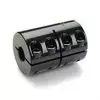
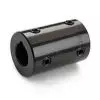
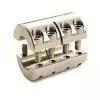
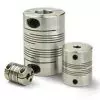
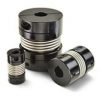

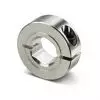
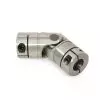
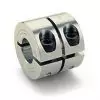 Short Rigid Couplings
Short Rigid Couplings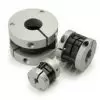 Controlflex Couplings
Controlflex Couplings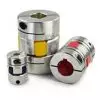 Jaw Couplings
Jaw Couplings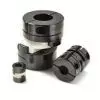 Oldham Couplings
Oldham Couplings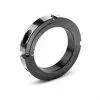 Bearing Locknuts – TCN
Bearing Locknuts – TCN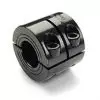 Double Wide Shaft Collars
Double Wide Shaft Collars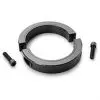 Heavy Duty Shaft Collars
Heavy Duty Shaft Collars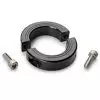 International Series Shaft Collars
International Series Shaft Collars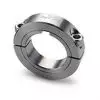 Keyed Shaft Collars
Keyed Shaft Collars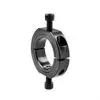 Mountable Shaft Collars
Mountable Shaft Collars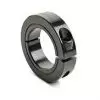 One-Piece Shaft Collars
One-Piece Shaft Collars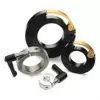 Quick Clamping Shaft Collars
Quick Clamping Shaft Collars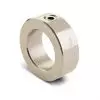 Set Screw Shaft Collars
Set Screw Shaft Collars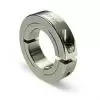 Thin Line Shaft Collars
Thin Line Shaft Collars Threaded Shaft Collars – Pacific International Bearing Products
Threaded Shaft Collars – Pacific International Bearing Products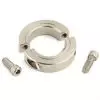 Two-Piece Shaft Collars
Two-Piece Shaft Collars Friction Bearing Universal Joints
Friction Bearing Universal Joints Needle Bearing Universal Joints
Needle Bearing Universal Joints